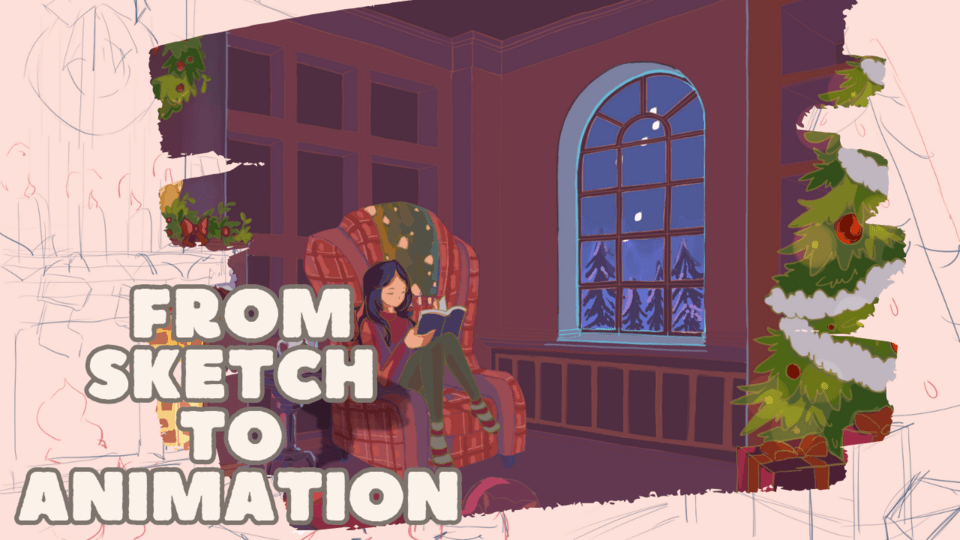Mouth: Anatomy and emotions
1. Introduction:
Hello and thank you very much for stopping by.
This tutorial will begin with the basic concepts of human anatomy about the mouth, which includes how to position it correctly on the face, limits on movement, as well as treating the lips, tongues and teeth separately, to finally show how the mouth changes according to the emotions.
In summary, the tutorial focuses on two specific points:
1. Anatomy: Where the positioning of the mouth is shown anatomically and the different parts that compose it.
2. Expressions: Where the evolution of the mouth is shown according to the emotions shown by their intensity.
And with this, the tutorial begins.
2. Anatomy:
Like many other parts of the human body, there are parameters and references to position the mouth correctly.
But before that, a good base to create the face on which to work is using the 3D models that Clip Studio Paint offers among the available materials.
In this way, it is much easier to draw the human anatomy in order to position the mouth correctly.
First, and usually, the mouth is located at the bottom of the human face. To be more exact, if the face is divided into three horizontal parts, from the upper part of the forehead to the chin (1), the mouth is located in the central area of the lower strip.
And in the same way, vertically, the mouth is located in the central division, serving as a reference to determine the limit of the human mouth at rest (2).
Regarding the face in profile, the lower area of the eye serves, again, to limit the width of the human mouth at rest (3), without showing any emotion.
Finally, it is necessary to mention that seen from the profile the mouth presents a descending diagonal shape, when drawing a line between the nose and the chin (4) can be used to ensure that the correct position is maintained.
Now, since the mouth is made up of muscles, it obviously has the ability to move in different directions, so the proportions change according to the artist's needs.
Still, it is possible to determine certain parameters with the help of a comparison:
Vertically speaking, it can be seen how the lower part of the mouth is capable of opening to a greater extent than the upper part, to the point that it is able to reach the same level as the chin of the face on the left.
Although another way to determine the limit to which the mouth can open vertically is by measuring the length of the nose, since the size of both is the same.
Horizontally, the border of the lips passes and is precisely at the same level as the middle of the eyes from both perspectives.
On the other hand, it is necessary to remember that the human face maintains a spherical shape, so the mouth will maintain a curved shape following the shape or volume of the face, it should never be drawn as a flat element.
Taking this as a basis, the parts that make up the human mouth, that is, the lips, tongue and teeth, will be taught in more detail below.
2.1. Lips
The lips are the most visible part of the human mouth, they are characterized by their fullness and volume.
The best way to draw the lips more easily is by making a sketch as a base (1-5) to determine the thickness.
Now, reaching this point, when adding the characteristic reddish color of the lips, as it is an area with many blood vessels, it is advisable to use a soft airbrush (6).
Finally, shine is added (7).
As far as the tonality is concerned, it is necessary to mention that the color of the lips is linked to the skin tone, but sometimes it is possible to apply any type of color pretending that it is lipstick.
Finally, there is a distinction between female and male lips, the latter being thinner and thinner.
2.2. Tongue
The tongue is a muscle found inside the mouth (1), although it is capable of moving and positioning itself outside of the mouth as required.
In terms of shape, this organ has an elongated shape, becoming thinner at the tip.
In addition, the innermost area of this has a greater volume and curvature towards the center of said tongue (2).
The tongue inside the mouth will usually remain between the lower teeth (3), however, when the tongue comes out it overlaps these teeth and covers them almost entirely (4).
Now, when it comes to drawing it, it is advisable to follow a basic sketch process to make the shape to paint it (5-8).
When shading it, it is advisable to use the watercolor brushes, specifically the opaque and transparent brush (9).
The same should be done with the gloss, although in this case it is better to use transparent watercolor (10), so that the lighting is not too harsh and gives the tongue a watery sensation.
23. Teeth
Finally, the teeth are the visible bony part of the mouth, located in the lower area of the skull known as the jaw.
Now, in particular, only the lower jaw is capable of moving, while the upper jaw will always remain static.
A basic way to draw the jaw is to imagine that both the upper and lower parts have semi-cylindrical solid shapes.
In this way, it is easier to simulate the movement of the lower teeth, which is not straight, but opens to form a curve.
Regarding the drawing, you can start by making a basic sketch to be able to draw the shape of the teeth in alignment until finally painting it (1-3).
Shading can be done with which brush (4), but for brightness it is recommended to use transparent watercolor (5).
With this, the basic concepts of the anatomy that make up the mouth are finished, to finally move on to a practical example
3. Expressions:
As far as human emotions are concerned, although many other elements are usually used, such as the eyes and eyebrows, this time only the mouth will be used to show how it transforms with each expression.
This tutorial will focus exclusively on four different emotions: Anger, Sadness, Happiness, and Surprise.
3.1. Anger
The mouth is enlarged both horizontally and vertically to the point that the upper gums can be seen.
3.2. Sadness
Similar to anger, the mouth also widens considerably, but not vertically, in fact, the central area of the lips are pressed inwards.
3.3. Happiness
Unlike the previous one, the ends of the lips are directed exclusively upwards, while the center of the lips
3.4. Surprise
Unlike the previous ones, this expression does not show the teeth, which are always hidden by the lips.
In this case, the mouth evolves into an O-shape.
4. Conclusion:
Finally, the tutorial on how to draw the human mouth and all the parts that make it up is finished, in addition to using some expressions as an example.
Lots to read and I hope you have understood everything.
See you soon.
























Comment